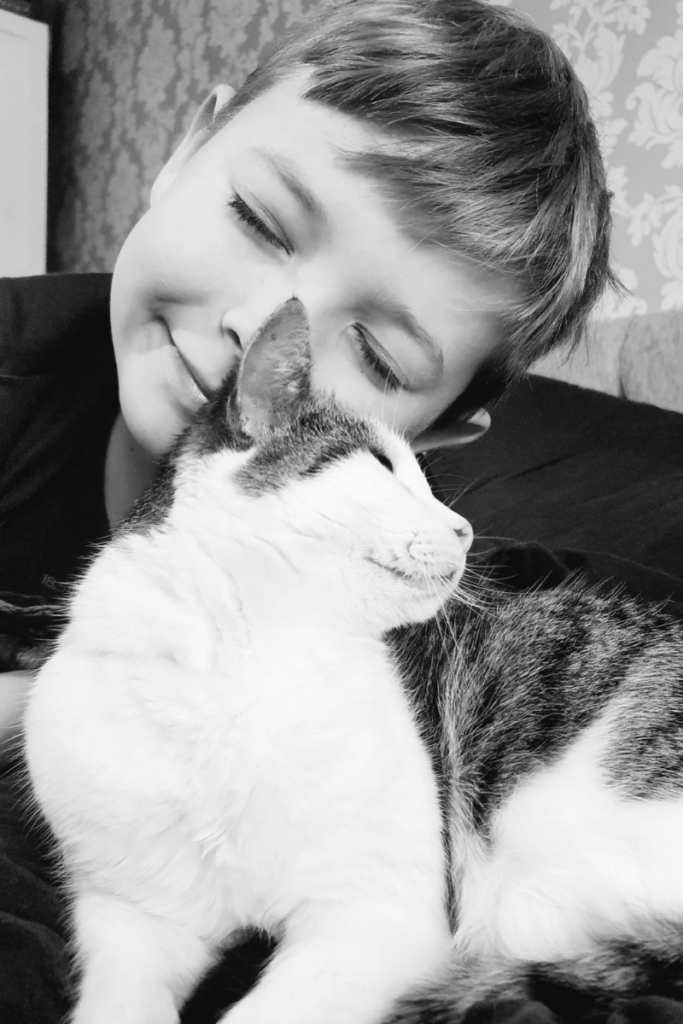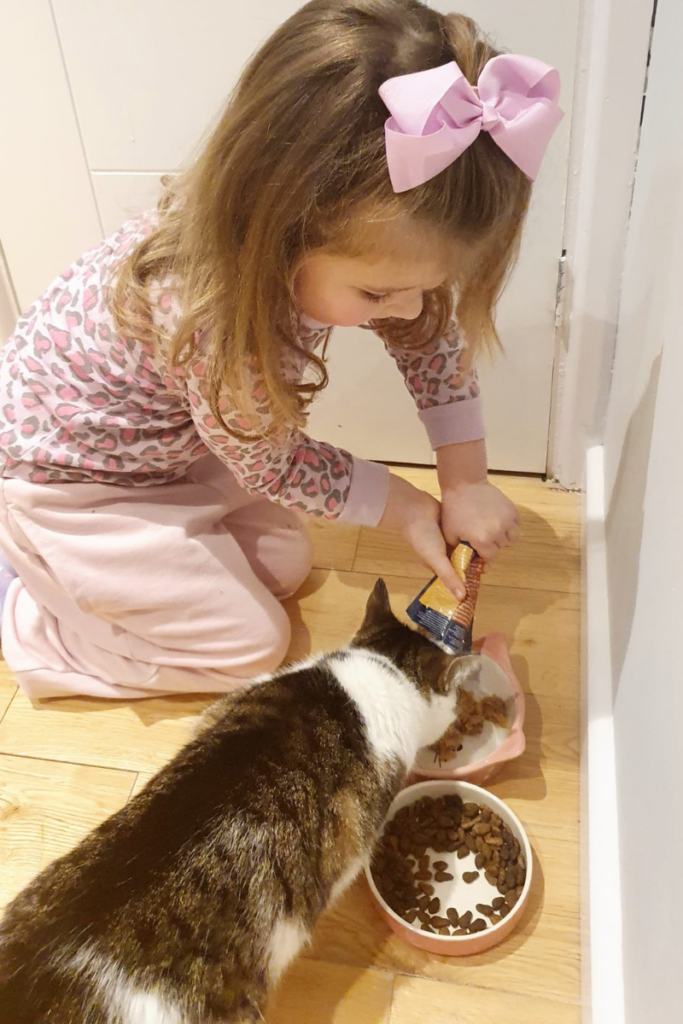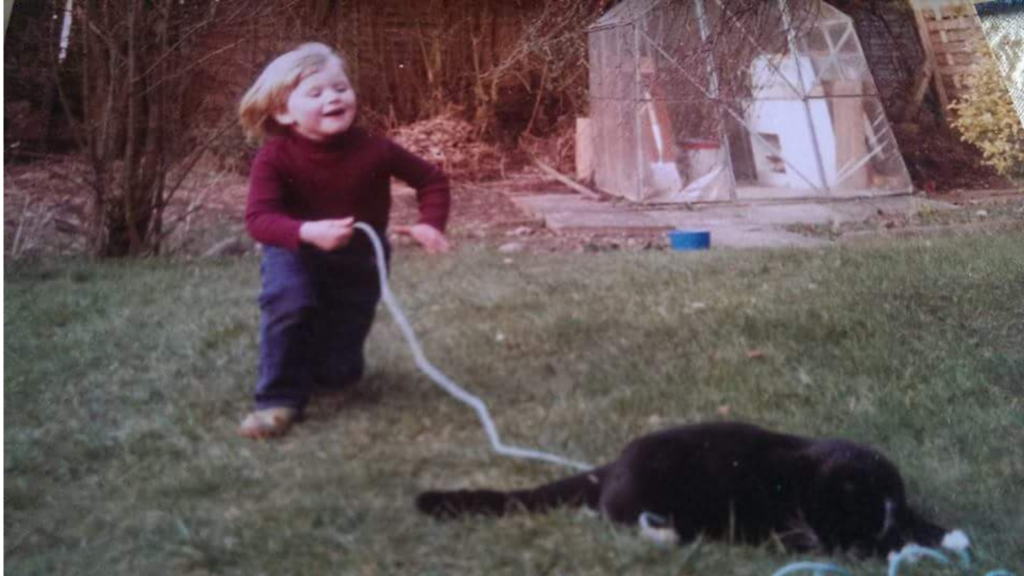
Due the uniqueness of every child and every cat, there will never be any guarantees of a fairy-tale outcome. By following the tips in the this post you can help children to understand cats and how they can increase their chances of a positive relationship or, in some cases a lifelong loving bond.
Of course, this is something which will evolve over time, as both child and cat learn to grow in confidence and understanding. Patience and adult supervision is essential. If you are currently looking for a cat to join your home, I would strongly recommend that you talk to your local rescue centres to find a cat who is most likely to cope in a home with children (not all cats/kittens will cope well in a lively family environment). When you have found the right cat for you, this article by International Cat Care can help you to plan how to introduce your new kitten/cat to children Introducing Cats and Children
Young Children and Cats
Most young children have a natural tendency to make loud and sometimes spontaneous squealy noises. They may also make unpredictable fast movements and ‘grabbing’ actions. None of these behaviours are desirable to cats and many will choose to stay right out of the way, opting for a quieter, safer environment (safe from being poked or grabbed!)
Children are often excited by the sight of a cat and keen to interact with them. Understandably, they feel confused and upset when said cat swiftly departs or worse still, lashes out before leaving!
It is important to consider the physical and emotional harm that cats/children are capable of inflicting on each other (be it intentional or accidentally) which is why adult supervision is essential.
Cats are Cats.
Cats will (and should) always behave like cats. They will naturally protect themselves if they feel under threat from humans, whether this be running away, hiding, scratching or biting. Therefore, we must teach our little ones to respect cats and to behave in non-threatening ways.
NEVER punish a cat for lashing out/scratching/biting. These behaviours are only chosen when cats feel they have no other option. If your cat is demonstrating aggressive behaviour, it’s advisable to keep child/cat away from each other while the root cause of the aggression is explored. Veterinary expertise should be obtained in such circumstances to rule out chronic pain, illness or stress which could be causing the aggression.
Patience Pays
As children learn that their gentle, considerate behaviour is preferred by your cat, they will have more opportunities to develop a mutual trust. Such relationships can go on provide a unique sense of love and the most wonderful, treasured memories.
Top tips for helping children and cats to bond (ages given are just a guide)

Children 2-3 years
- Practice using ‘little voices’ when the cat is around (make this into a game, practising whispering and using very soft/gentle voices)
- If/when the cat is comfortable approaching your child, show them how to stroke the cat gently using the appropriate pressure (in the right direction of the fur!) Guide your child’s hand over the cat to show how softly this should be done.
- Make sure your child knows not to touch the ‘danger areas!’ Most cats dislike their legs, tummies and tails being touched, so sticking to the head and shoulders is a good idea!
- Check out the children’s book ‘Minding Mittens’ which has been written by Veterinary Surgeon Aisling O’Keffee. Minding Mittens is a fun story about a little boy and his new kitten. This story, with its delightful illustrations teaches children about cat behaviour and how to care for cats responsibly. There is also a super colouring page and a quiz!
Children 4-7 years
- Check out ‘Minding Mittens’ as detailed above!
- Encourage children to practice their reading skills when your cat is around. Sitting still, using a quiet voice to read a book may encourage the cat to stick around. They might even decide to sit near the storyteller if they are lucky! Some children may like to think that they are reading to the cat!
- At this age your little one can become a cat helper! Maybe they can help you to choose the cat’s food and learn how much food the cat eats. An important job is serving your cat at mealtimes… little ones can be encouraged to pop the food in the right place for your cat (see picture)
- Playtime can be fun for both! It is advisable that children keep their hands and faces away from cats when they play (to avoid accidental injury). Long pieces of string or wand toys (those with long handles) are safest as the cat is chasing whatever is on the end.
Children 8-11 years
- Have a go a creating a puzzle feeder for your cat! This is a great way for children be creative whilst learning more about cats and their natural behaviours (find out more about Puzzle Feeding for Cats)
- Learn about responsible pet ownership and how much cats cost to look after
- Do something fun to raise money for your local cat rescue shelter!
Education Resources for Children who Love Cats
Cats Protection have created fabulous Moggy Modules for children aged 5-11 where they can complete online learning all about cats! Modules include information about the right home environment for cats, cat behaviour, diet and healthcare. There are 5 modules to complete and you can even print a certificate at the end!
Feline Focus Packs are also available from Cats Protection for children aged 11+ who are interesting in furthering their knowledge of cats.


Fantastic post… very helpful tips and advice. I can personally recommend if you have children to follow ‘More Purrs’ steps in creating a living and respectful bond between your child(ren) and cats. I have taken advice from More Purrs and am pleased to say that my daughter who was petrified of our family cat, now completely adores her. These tips have helped bring the relationship together.